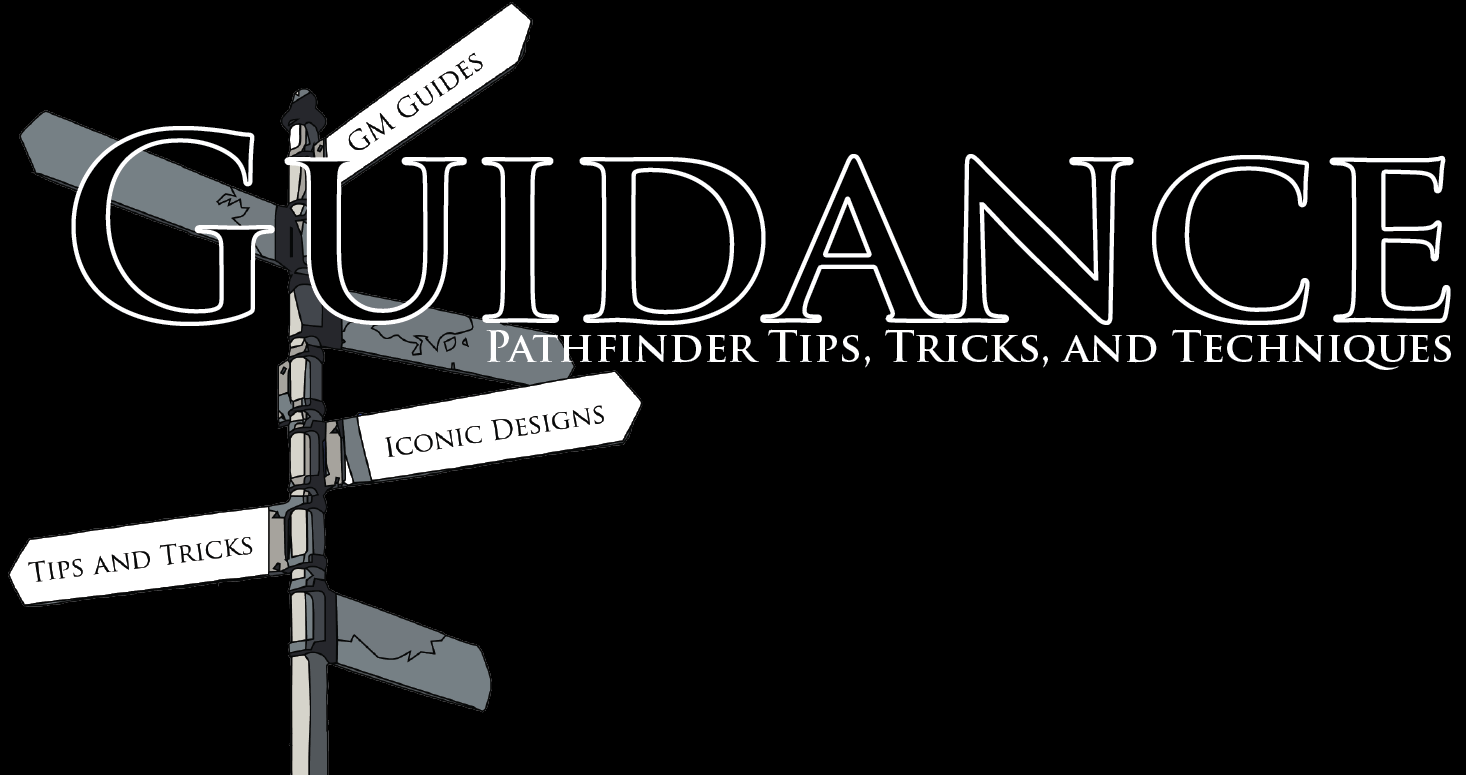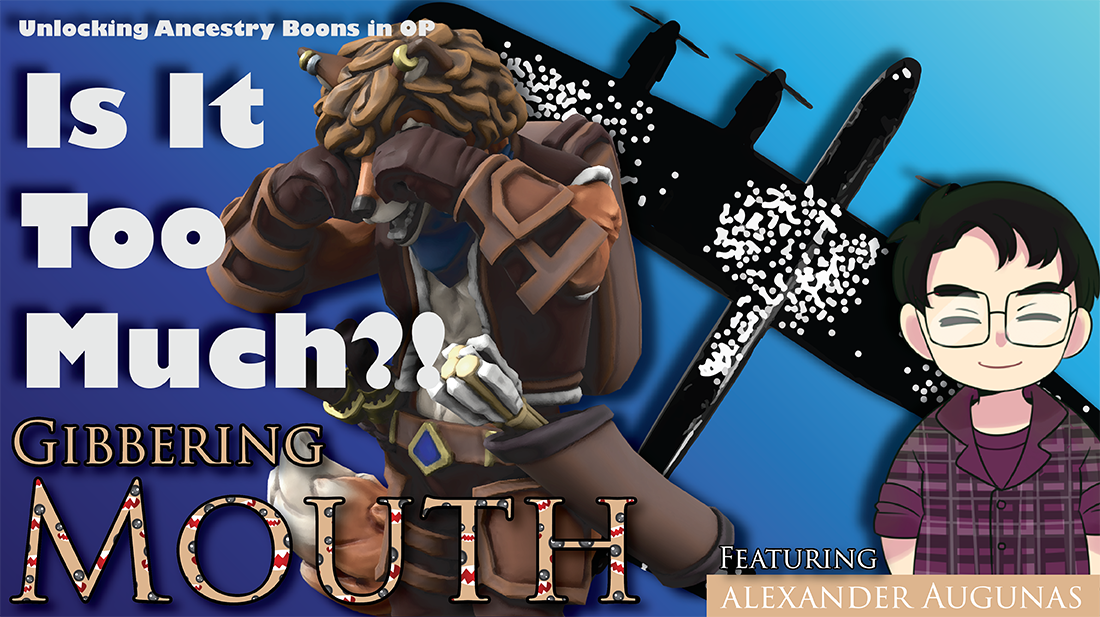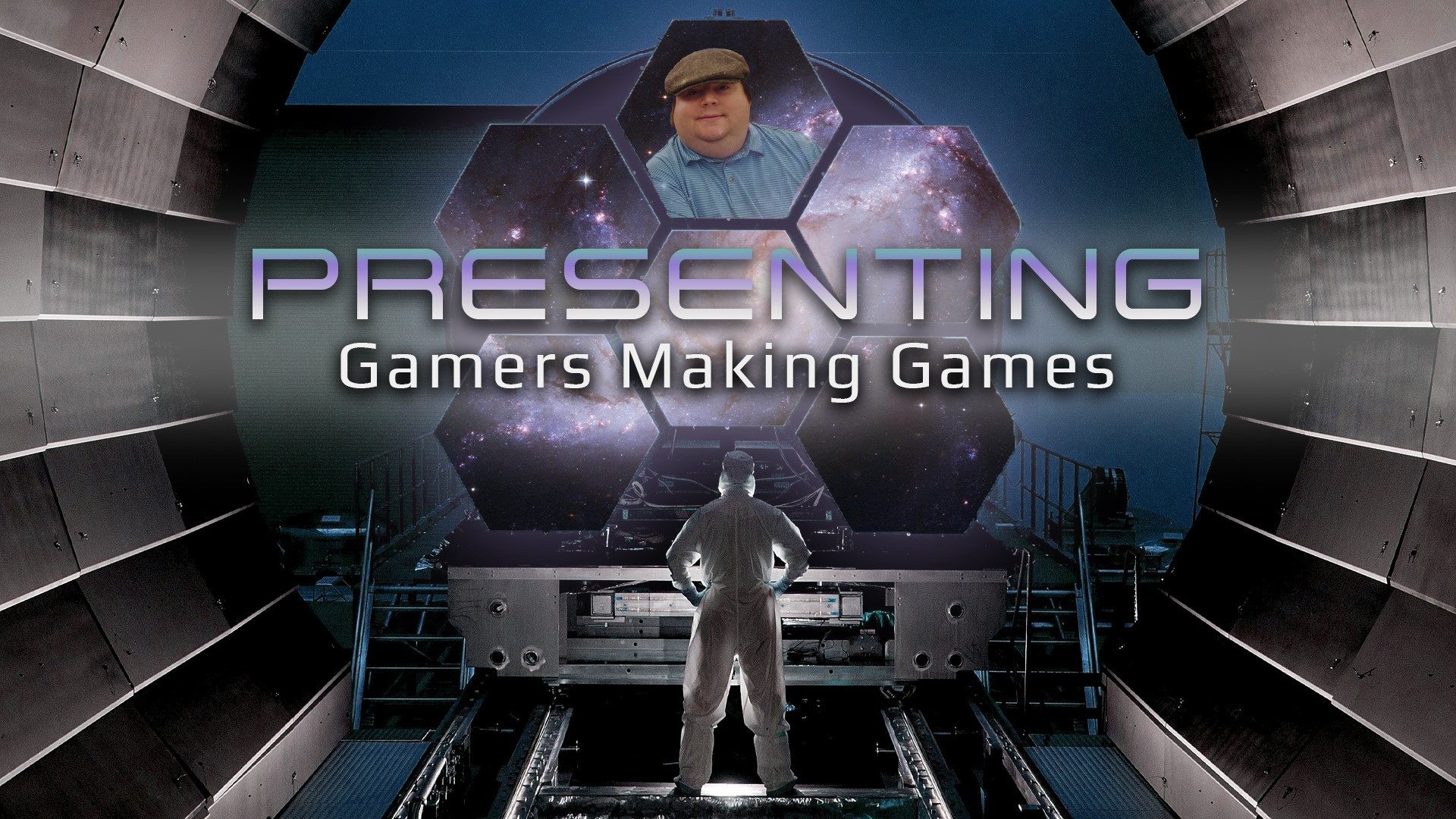Hello, and welcome to Guidance! I’m Alexander Augunas, the Everyman Gamer, and each week I offer tips, tricks, and advice to help you get the most out of your game. Or at least, that’s what I normally do. This week, I’m doing a lot of math instead. About a month ago, Paizo Organized Play published a big blog post that talked about the transition from Fame into Achievement Points that Starfinder would be undergoing. Shortly after, the Know Direction Network’s own Dustin Knight messaged me to let me know that Pathfinder 2E OP had a new boon available. Basically, you can spend 80 Achievement Points from PF2 to unlock a Pathfinder ancestry as a race in Starfinder OP—obviously I was informed of this because kitsune was an option, but others included kobolds and gripplis.
I couldn’t really figure out why that left a bad taste in my mouth at first, but it did. I then remembered the legendary segment Perram did about Organized Play’s Achievement Point unlock system and thought to myself, “Huh, is this why I didn’t like this?” So I decided to sit down and figure out for myself, “Hey, is the Achievement Point reward for species in Starfinder too much?” So let’s take a look.
Unlocking an Ancestry on a Checkbox Chronicle
Before I really start looking into the Achievement Point’s species unlock system, I decided that I should take the time to analyze what was likely the beta test for this system: the old Checkbox Race Boon that got used on occasion in PF1 for the Regional Support Program’s skinwalker, aasimar, and tiefling boons, and, most notably, in the Skitter Shot Free RPG Day chronicle sheet of 2018. Skitter Shot features four skittermander PCs who explored a starship that mysterious went dark. Skitter Shot is also notable because of its chronicle sheet; when you complete Skitter Shot, you receive a special boon called Nufriend Skittermander that allows you to create a new skittermander character. The chronicle possesses 24 boxes arranged into three rows as well as specialized rules for how you can check off those boxes. When all the boxes are checked, you unlock the ability to either create a new skittermander character or upgrade an existing skittermander character you have (such as from a promotional boon) with an additional ability bonus. Very helpful indeed.
The rules for checking off the Skitter Shot chronicle’s boxes are pretty straightforward; each time you play or GM a Starfinder adventure and receive credit on a character, you mark one or more of the boxes on the chronicle sheet. The acquisition rate for the chronicle looks like this:
- Mark 1 Box for playing 4 hours of quests, a scenario, or a 16-Page Module other than Skitter Shot.
- Mark 2 Boxes for playing an Adventure Path Volume.
- Mark 2 boxes for GMing 4 hours of quests, a scenario, or a 16-Page Module other than Skitter Shot.
- Mark 3 boxes for GMing an entire Adventure Path volume.
- Mark 3 boxes for GMing an event that receive Paizo Event Support or a Regional Support Package.
By default, this means that if you want to unlock a skittermander simply by playing a bunch of games, it’ll take 24 scenarios of play to unlock a skittermander, or 12 scenarios if you’re willing to GM. This is twice as efficient if you play at an event that receives Paizo Event Support or 1-1/2 times as efficient if you GM at such an event, meaning if you manage to play 12 scenarios in a single week at GenCon you’ll have your skittermander done, while it’ll take 8 scenarios at GenCon (aka being a Tier 1 GM) to do the same as a GM.
Now, let’s take these rates and contrast them with the current Achievement Points system.
Buying an Ancestry with Achievement Points
Achievement Points as a system are designed to do a few things. For one, they’re supposed to help OP go paperless for reporting, which is nice. Additionally, they’re designed to streamline convention access to content, as prior to the Achievement Point system Organized Play put out tons of content every year that only a small percentage of their players would get to access at a given time. After all, not everyone can fly out to GenCon or to Origins or to PAXEast, so not only was the old system of, “Go to a Con and get rewards for GMing a ton,” not really fair to people without financial means to go to those venues, it also disproportionately rewarded GMs by essentially keeping a distressingly large body of content reserved for the most affluent GMs who were willing to run an obscene number of games at conventions. Speaking as someone who did the Tier 1 GM Con a few times, it’s not a great system.
Achievement Points is, at its core, a checkbox system. You play the game, you get digital points. You spend digital points on boons. Easy, right?
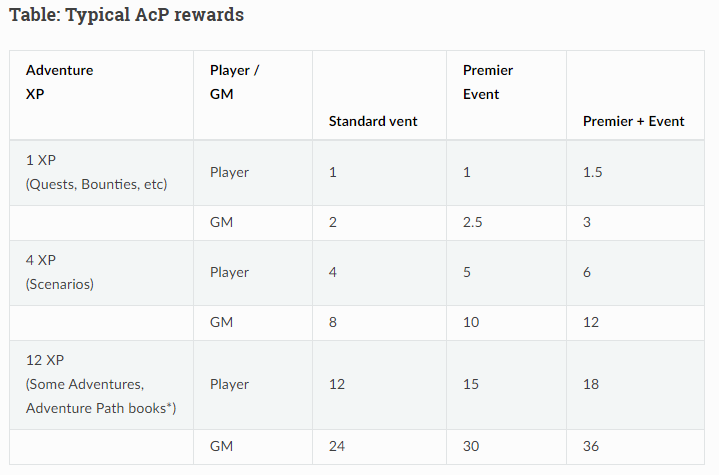
Copied from https://org-play-2e-guide.readthedocs.io/en/latest/02.3_rewards.html on April 30th, 2021.
At a glance, this chart looks VERY similar to the checkbox system that I summarized from my Skitter Shot boon, but without the fractions. What I mean by this is that in the Skitter Shot boon, you specifically had to play 4 hours of quests to check 1 box as a player (or 2 boxes as a GM). In this system, imagine all the checkbox numbers multiplied by 4, so you get:
- Mark 1/4 of a Box for playing a 1-hour quest. (This is standard.)
- Mark 1/2 of a Box for GMing a 1-hour quest. (This is standard.)
- Mark 1 Box for playing a 4-hour scenario. (This is standard.)
- Mark 8 Boxes for GMing a 4-hour scenario. (This is standard.)
- Mark 12 Boxes for playing an Adventure Path. (This is generous; under the checkbox system, playing an AP volume is only worth 2 boxes or 8 AcP.)
- Mark 24 Boxes for GMing an Adventure Path. (This is also generous; under the checkbox system, GMing an AP volume is only worth 3 boxes or 12 AcP.)
As a result, we can see that this system is basically the same unless you’re playing or GMing an adventure path, which is worth significantly more AcP then it would have been under the old system. Additionally, the new Achievement Points system gives a ton of bonus points if you play at a Sanctioned Event (+25%) or a Premiere Event (+50%). In general, if you’re playing at your local Organized Play lodge, you’ll be almost constantly receiving that bonus +25% Achievement Points, while the bonus 50% Achievement Points is received for major conventions like GenCon. Additionally, at 12 Achievement Points per scenario GMed, a Tier-1 GenCon GM (aka a person who runs a full schedule of 8 games across 4 days) earns a total of 96 Achievement Points for GenCon, which is enough to earn a single 80 AcP ancestry boon.
Problems with Achievement Points
In sales, a whale is a prospect that is many times larger than what is typical or average. You’ll often hear the term in mobile gaming and Trading Card Gaming, where the term refers to players who invest an ordinately large amount of money into the product compared to the average player. For example, if you’re playing a game like Guild Wars 2 and dumping thousands of dollars into purchasing in-game currency to expedite a gameplay goal you have, you’re a whale. Sales associates will often make business decisions around the spending habits of their whale players; a great example is Blizzard Entertainment’s World of Warcraft.
For example, let’s say that the WoW Marketing Team has data that suggests that on average 10% of their 5 million subscribers (this is the number of subscribers WoW during what has been regarded as its worst expansion pack, Warlords of Draenor) are willing to spend $25 USD to purchase a fancy-looking mount from the in-game shop. They pick an artist and have that artist spend half a year doing nothing but design that mount (that is almost definitely not what happens, but for the purpose of this example it’s easier than trying to predict the precise man hours that went into something like a mount). As of April 30th, 2021, glassdoor.com (a decently reliable site) stated that a Blizzard artist makes about $90,000 USD a year on average, so let’s say that Blizzard paid this one artist half a year of labor, or $45,000, to make this mount. 10% of 5 million is $500,000, so by making that mount Blizzard made five times as much money as they invested. This is, essentially, how whaling works in sales. You don’t need EVERYONE in your market to buy a product, just enough of the high-end spenders that your product becomes valuable.
So, what does this have to do with Organized Play?
In essence, the Achievement Point system is priced around Organized Play’s whales. I’m talking, of course, about people who are willing to fly out and spend hundreds of dollars to attend a convention. Allow me to demonstrate:


Above you’ll see three Achievement Point price examples that I snipped from My Organized Play on April 30th, 2021. Please note that the Catfolk Ancestry costs 120 AcP, the Kitsune Ancestry costs 80, and giving your character a Geniekin Heritage costs 80. Now, like we mentioned earlier, when comparing the Checkbox Chronicles to Achievement Points, one Checkbox is worth about 4 Achievement Points when you’re trying to earn them because the system effectively wants a 1-hour Scenario to be worth 1 point, with every hour spent playing worth 1 Achievement Point. If we translate these Achievement Point costs from Points to Checkboxes, you’d have something like this:
- Catfolk: 30 Boxes
- Geniekin: 20 Boxes
- Kitsune: 20 Boxes
In short, while things like Kitsune and Geniekin remain pretty true to the cost of a skittermander boon from Skitter Shot, catfolk (and similar ancestries) arbitrarily cost 50% more. So much more, in fact, that GMing a full Tier 1 roster at GenCon will award you with one 80 AcP boon and one only with a handful of AcP to spare. For this reason, to me this system looks overwhelmingly designed with GenCon in mind, allowing the creators to be like, “Yeah if you’re a Tier 1 GM you’ll walk away with 96 Achievement Points, which will get you a moderately priced ancestry boon. Enjoy! Meanwhile everyone else is stuck waiting, what? 80 hours of play to unlock a new ancestry? That’s a REALLY long time to be able to get to play my character ….
Conclusions and Opinions
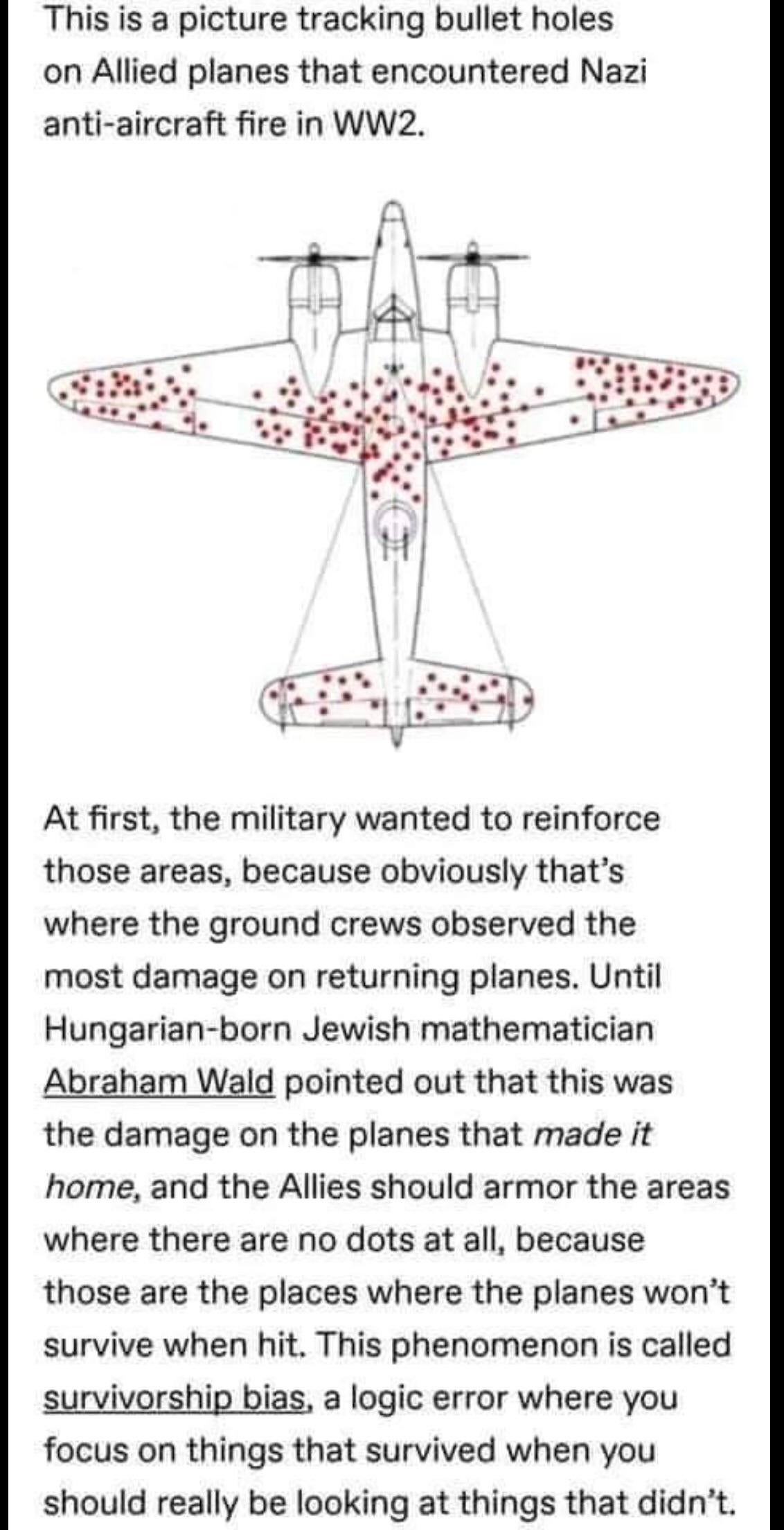
When you compare Checkboxes to Achievement Points, where Organized Play got their values becomes pretty apparent. This is not a new system; this is the same system that Paizo has been using since 2017 / 2018. Unfortunately, the question we should be asking is, “Is this the system that Paizo needs to attract new players to Organized Play?”
In my opinion, even if this system requires the same amount of time to unlock a playable species, the biggest problem with this system is that it makes it so the default ancestries available to new players are basically ones that are strongly associated with 5th Edition D&D. The only thing Pathfinder Society’s got Core that’s really unique to Pathfinder are kobolds and goblins, and both of those species are technically available for play in 5E. Players have to play 20 games in order to pick an ancestry that belongs to Pathfinder’s world, an ancestry that is uniquely Pathfinder. Paizo might have unique takes on gnomes, goblins, and kobolds but those are still just takes on an idea that belongs to D&D. We live in a world where Pathfinder is not the dominate Tabletop RPG, and I feel Pathfinder Society should be working to place uniquely Paizo content in front of its players. Limiting player access to Paizo content is simply making it easier to compare Pathfinder to 5E, which is currently a skill check with disadvantage for Paizo.
Perhaps more existentially, however, is the fact that ancestry is really the only aspect of the ABCs of Pathfinder 2E character building that has any real amount of access associated with it. The majority of classes have always available access. The vast majority of backgrounds have always available access. But of Pathfinder 2E’s 22 ancestries, only seven of them are always available. Less than 30%, and for what? To make ancestry participation across the entirety of Organized Play better represent the world of Golarion? Why? What does that metric serve beyond data in a spreadsheet, and how does that restriction enhance player enjoyment? To me, this system feels like it only really exists to try and reward players for playing a lot and GMs for GMing even more, but how many people have been dissuaded from playing PFS because they couldn’t play their favorite ancestry?
I want to end this article with a cautionary tale on survivorship bias. I could sit here and explain what that is, but the short story I’ve produced to the right does a much better job then I ever could, so I shared it here. Most hard-core PFS players I’ve talked to say that they really like the ancestry rewards, that limiting the content is good and healthy for the game as is giving unique rewards to the people who “contribute the most” to PFS. Maybe the developers haven’t heard many people like Perram or myself complain against the current implementation of ancestries, so therefore we’re wrong and everything is working fine and people like it.
I would caution against thinking like that, because in this particular case people who say they like the limitation? They might be right. They might be fun. But they also might just be the planes that survived, the planes of the people for whom ancestry access wasn’t a deal-breaker. They just might be the planes that made it home, and there could end up being a lot of planes—a lot of people interested in Pathfinder and/or Organized Play—who had their planes shot down early because a lack of favorite ancestries was a collision with which their investment in Pathfinder couldn’t survive.
I’m Alexander Augunas, the Everyman Gamer, and I really just want everyone to have fun in Organized Play. And hopefully we’ll start to see more of that soon.
Addendum: A bunch of people have asked me about what I think about the new, “Earn 80 Achievement Points in Pathfinder 2E to unlock a species in Starfinder” boon. I think that it’s bad design for the only way to unlock a species in Starfinder is to play Pathfinder 2E. It’s like paying for a World of Warcraft subscription and being told the only way to get an in-game item you want is to play 80 hours of Overwatch. Those are two completely different games, and no one should need to play a game they might not want to play in order to access a reward in the game they want to play. This, to me, feels like someone wanted to add a reward with good intents for the “neat” factor but didn’t consider that not all players play both Paizo games, and that asking someone to play 80 hours of a game they might not be interested in is a great way to get a player to walk away from both of your programs.
Addendum 2: On 05/26/2021, Paizo Organized Play issued the following statement to the Know Direction Network in response to the previous addendum:
“Starfinders will gain the ability to purchase boons for Alien Character Deck species on Friday, May 29th when the Starfinder Society Achievement Point program goes live during PaizoCon Online 2021, so it will not be a case where Starfinder Society players will have to play Pathfinder Society Organized Play to unlock any Starfinder content.”
As a result, the issue wherein one would be forced to play Pathfinder Society 2E in order to unlock content for Starfinder Society will end when Starfinder Society Year 4 goes live on Friday, May 28th and we can expect an expansion on how ancestries are made available to players in Organized Play.
